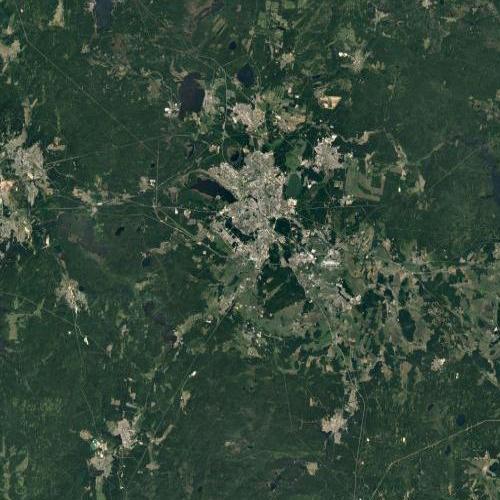We’re halfway through an eventful 2020, and looking back it feels like it’s been an eternity. But, there’s much more to remember than just the events of this year.
Let’s look back on some life-changing, breath-taking, and earth-shattering events that have made it into the history books.
Assassination of President Garfield
President James A. Garfield ran for president representing the relatively new Republican party, supporting purging corruption in the civil service and enhancing civil rights. Garfield was assassinated at a railroad station in Washington, D.C. by Charles J. Guiteau on July 2, 1881.
Guiteau was delusional and vengeful after not receiving a political appointment. He was initially treated by doctors who did not practice hand sanitation. This likely led to the infection that killed him about ten weeks later, on September 19, 1881. Guiteau was convicted of murder and put to death in 1882.
Garfield was buried in Cleveland, Ohio, and there is a substantial monument and tomb marking his grave site.
Signing of the Declaration of Independence
America celebrates Independence Day on July 4, because on that date in 1776, a few dozen men gathered in Philadelphia, Pennsylvania, declared independence from Great Britain. It was more than a year into the fighting for greater independence for the 13 colonies. It marked a turning point in the war, officially stating that the American colonies were sovereign, independent from, and not part of Great Britain.
The war didn’t end for seven more years, but it has been celebrated as the national holiday for the United States ever since.
Fall of the Bastille
The Bastille in Paris, France, was originally built to be a fortress, but turned into a prison by the 1650s. As France descended into civil conflict in the 1780s, the Bastille became a symbol of the unjust power of the monarchy by the revolutionary leaders.
On July 14, 1789, a large crowd stormed the prison, ostensibly to free the prisoners, but leaders were in search of the gunpowder stored there. Since 1790, the day has been celebrated as France’s “national day”, much like Independence Day in the United States.
The prison was torn down during the revolutionary years, but has been replaced with the Place de la Bastille, with a large column in the center to commemorate the events of the July Revolution.
Murder of Czar Nicholas and Family
Nicholas II was the last Czar of Russia. As World War I raged, domestic political and social upheaval tore the country apart. The country’s political structure collapsed and Czar Nicholas was forced to abdicate his throne. He and his family were forced into exile in Yekaterinburg. However, revolutionary leaders were not content as long as the symbol of the monarchy still lived, and the death of the Czar and his family were ordered.
He, his wife, and five children, along with close servants and friends, were shot to death on the night of July 17, 1918. Their bodies were dismembered and hidden to prevent supporters from finding them and turning them into martyrs and undermining the revolution.
Apollo 11 Lands on the Moon
For as long as humans could look up, we have dreamed of being among the stars, but on July 16, 1969, three American astronauts left earth’s gravity and prepared to land on the moon.
On July 20, Neil Armstrong, Michael Collins, and Buzz Aldrin orbited the moon. Buzz Aldrin and Neil Armstrong landed on the moon, with the world watching as the two men descended from the Eagle lunar module, and took “one small step for man, one small step for mankind.”
John Dillinger is Killed in a Police Chase
John Dillinger was a famous gangster and bank robber in the 1930s. He robbed banks in four states, killed one police office, and evaded police for years. In an effort to catch him, the Department of Justice created what evolved into the Federal Bureau of Investigation.
In July 1934, word got to the federal agents that he was in Chicago, and on July 22, they tracked him to the Biograph Theater. When he exited the theater, he saw the officers, tried to flee, and was shot in the pursuit. As word of his death spread, crowds gathered to see the crime scene and even dip handkerchiefs and newspapers in the blood as souvenirs.
Korean War Armistice
After World War II, supervision of Korea was divided between the Soviet Union and the United States. War broke out over the division in 1950, and carried on for three difficult years. Both sides eventually began negotiations to end the war, and on July 27, 1953, they declared an armistice, or ceasefire, which had been negotiated at the border between North and South Korea at the 38th Parallel, in Panmunjom.
Technically, the war is still not declared over, and both sides live in a state of constant preparation in case the conflict heats up again, as it has threatened to dozens of times over the seven decades since the fighting stopped.
These historical events show that any day can change the world, whether it’s for one person like John Dillinger, or the entire world as when Apollo 11 landed on the moon. Every day holds the potential to change your world–so make the most of it!








The Apollo 11 Moon Landing correct quote was
“That’s one small step for man, one giant leap for mankind.” — Armstrong said as he stepped onto the moon. He later said he meant to say “for a man.”
Thanks! You’re absolutely right! Most people would be surprised to learn that.